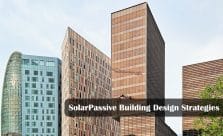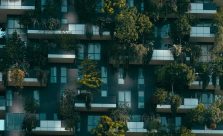Usually, the trends of modern office designs across the globe would be related to interesting architectural ideas premiering across magazines, trade shows, and features. Unfortunately, the impact of the global pandemic has filtered into every aspect of our daily lives, including how we work. So now, the focus is more on the different features of an office layout and amenities created for the flexible workforce.
The one big difference in spaces around India is the driving force for a more natural setting. Designers are asked to integrate materials and elements that reinforce the natural world instead of the stuffy cubicle settings from earlier generations. Here are some of the latest trends that we have found applicable in modern office design and interior concepts.
Social Distancing with Desk Pods
A funny thing happened after the phrase ‘social distancing’ became a household moniker. We began to realize how much we value our privacy. Even after the pandemic becomes a history lesson, we will still embrace putting distance between our desks and bodies. This is even more valuable in India, where it is expected to constantly be jammed packed into trains and buildings because of the growing population.

Modern offices are now designing their spaces with desk pods instead of individual rooms. These are groups of 3-4 desks or 2 tables put together to provide a small working area for teams or partners. This allows better focus without feeling like you are being ostracized to a corner of the building. In addition, it gives workers a bit more freedom to enjoy their day while still meeting expected goals and productivity.
Outdoor Accommodations
More offices are beginning to utilize outdoor spaces for meetings and conferences. There are even some that are creating sitting areas similar to a small café with little tables that fit 1-2 chairs. The reason for this trend is due to the open air being safer during the pandemic than indoor climate-controlled spaces where the air gets recirculated frequently.
Not every office is capable of including an outdoor seating area. India gets hot and humid and is prone to quick weather events that can make that kind of space difficult to manage. In cases like those, it is becoming more common to see natural lighting and window elements that cut down the usage of indoor electric lights. This is to save on operating costs and create more comfortable work settings for individuals who have been used to working from home for so long.
Eliminating Conference Rooms
Workflow has always been important to modern office design, but now the staple conference room is becoming a thing of the past. With so many people moving to remote capabilities, large conference spaces are being switched to smaller rooms with advanced communication technology. New interior designers emphasize areas where 5-15 people can sit, and large screens are available around the room with ambient microphones inside for everyone dialing in remotely to hear clearly.
This also helps architects have a bit more flexibility in their designs. For example, now they are not forced to envision a business built around conference spaces. Instead, they can focus on lobbies and staff work amenities as the center of the building.
Influence of Remote Workers
The pandemic forced a lot of workers to perform their job roles from their homes. As a result, industries and businesses had to adapt to new working infrastructures and communication tools. There have been some studies in other countries that have shown remote working actually increases productivity by 5-10% (https://www.bloomberg.com/news/articles/2021-04-22/yes-working-from-home-makes-you-more-productive-study-finds). Obviously, that doesn’t apply to all sectors, but it does shed some light on new business models.
To entice workers back into the workplace, new amenities are being introduced all over office design concepts. People want to feel more relaxed and welcome in their workspaces. They want the freedom to come and go at any hour, as long as their goals are met. That trend leads to more open office designs without assigned offices. Instead, an interior designer would need to create seating and working areas free from any traditional design all over an office location with charging stations, coffee counters, snack stations, games, and fresh air.
Hands-Free and Sanitation
The other significant impact of having a larger remote workforce is that they have gotten used to a cleaner life. The sanitation procedures introduced by the pandemic are becoming standard practice. People like feeling their workspaces are being adequately cared for every single day. They are also way more aware of what they touch. This idea lends itself to hands-free technology for everything from the lights to the bathrooms. The fewer workers have to handle, the happier they tend to be.
Environmentally Caring Employees
The most significant impact recent trends have had on modern office design in India is how workers desire natural materials and infused elements of water, wood, and plant life. Designers are required to create waterfall elements that lead into small indoor ponds or use reclaimed wood material accents throughout a layout.
The modern workforce wants to feel their spaces are more environmentally friendly, using technology and materials that support that social movement. While it gives designers a bit more leeway to play with design, there is a culture clash between older generations who were not exposed to such elements during their early careers.
Wrapping it Up
The modern workforce is demanding change in their lives, and that includes office design and interior layout. They want to incorporate the different impacts of the pandemic before they come back to the office. They also desire more socially aware environmental concerns in their designs. There is a strong desire to have a smaller carbon footprint among the current workforce.
These trends allow architects to reconsider traditional concepts and stretch their design goals more. It gives them more material choices and integrates advanced modern technology, all while continually trying new workflow concepts. This will be an exciting time in architectural design and one that we all should be paying close attention to as the pandemic becomes a memory.





